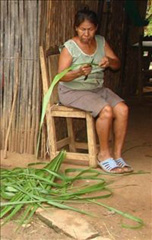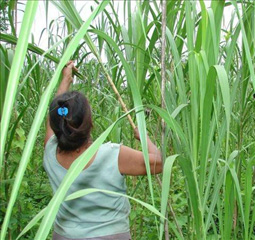Global Groove Life
Felt Casserole Trivet, Harvest
Felt Casserole Trivet, Harvest
Couldn't load pickup availability
These felt trivets add texture, style and fun pops of color while protecting your dinner table. The Harvest is great for fall and Thanksgiving entertaining. Crafted from fine New Zealand wool and azo-free dyes using age-old techniques. Handmade in Nepal by a Fair Trade women's cooperative.
- Size: Approximately 14 inch x 10 inch
- Care: Spot clean as needed. Do not machine wash or dry.
The Art of Felting:
The first step to creating these beautiful felt pieces begins with gathering some of the world’s finest sheep’s wool from New Zealand. Making felted wool is an ages-old, time-consuming process of bonding fabric with fiber. This is a physical job where the artisan’s scrub, rub, roll and rinse the wool again and again with soapy water.
Once the wool is bound into a sheet and the desired thickness is complete, the felt is laid out to dry. From there, the felt wool is cut and re-worked into many complex shapes and designs. The many sheets of wool might merge several colors to create patterns and layers. This takes a well-trained, talented artisan and is a true labor of love. The end results are colorful, one-of-a-kind textiles that are stunning to behold.
Share
About the Artisans
About the Artisans
 Joyeria Semilla meaning Seed Jewelry is a small fair-trade workshop in the Andean town of Villa de Leyva, Colombia. Girasol Taborda, a local artisan and social entrepreneur, started the workshop in the mid-1990s.
Joyeria Semilla meaning Seed Jewelry is a small fair-trade workshop in the Andean town of Villa de Leyva, Colombia. Girasol Taborda, a local artisan and social entrepreneur, started the workshop in the mid-1990s.
Joyeria Semilla’s objective is three-folds; to create new jobs, revive Colombia's handicrafts sector and to motivate locals to better manage their natural resources. The organization works primarily with socially and economically disadvantaged youths, single mothers and people with disabilities in the area. The company offers free training in product design, technical training and marketing to new members. Joyeria Semilla has trained them in the craft of jewelry-making.

Caña Flecha or “Gynerium Sagittatum” is a locally found palm tree in the regions of the Caribbean coast. The leaves from this plant are used for making jewelry, woven hats, bags and baskets. The Zenú Indians were and their descendants inherited the tradition of picking veins of the green palm leaf for weaving. These veins were made into woven hats and other products for their personal use.
The Zenú culture is said to have existed between 200BC to1600AD. With the arrival of the colonizers in the 16th century, the indigenous community declined of unknown reasons. Today a very small population remains that claims the inheritance of the almost extinct Zenú tribe. Known for their skills in the construction of major waterworks, canals and irrigation system along with being skilled goldsmiths, examples of their accomplished craftsmanship are found in various museums around the world. Their larger means of subsistence were hunting, farming, fishing and trading.
Caña Flecha is found in abundance in the region, and hence makes for a sustainable and naturally available raw material for these products. Every bit of the plant is utilized – from using in building walls and roofs in houses to food for cattle and medicinal purposes. It is from the central vein of the leaf that the fibers for weaving are obtained. After the hard surface is peeled off, the fibers are left in the sun to dry and undergo a natural tinting process; these fibers are barely about 1 millimeter in thickness and hence call for a lot of skill and patience to weave with. The dried fibers are then processed for natural coloration - some are boiled with lemon to whiten them and some are treated with mud and boiled with plantain leaves to blacken them. The designs are based on ancient motifs and mathematical representations, which are inspired by the early Zenú culture.
























